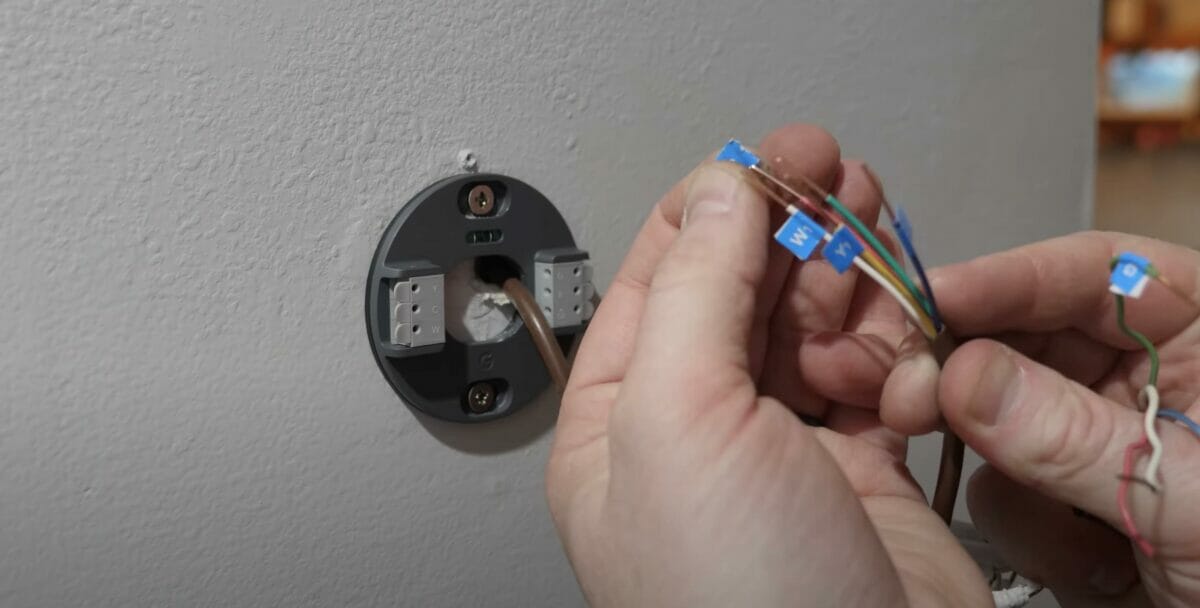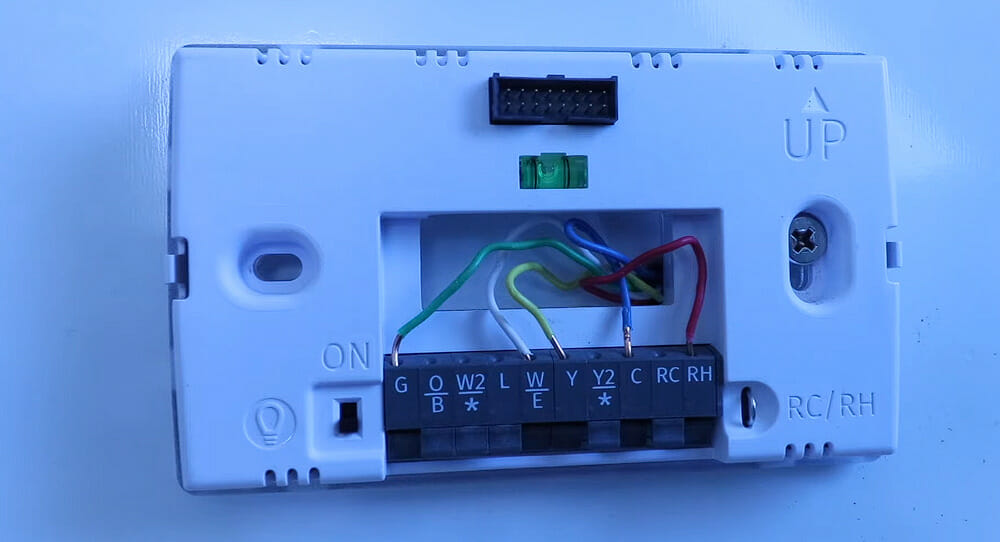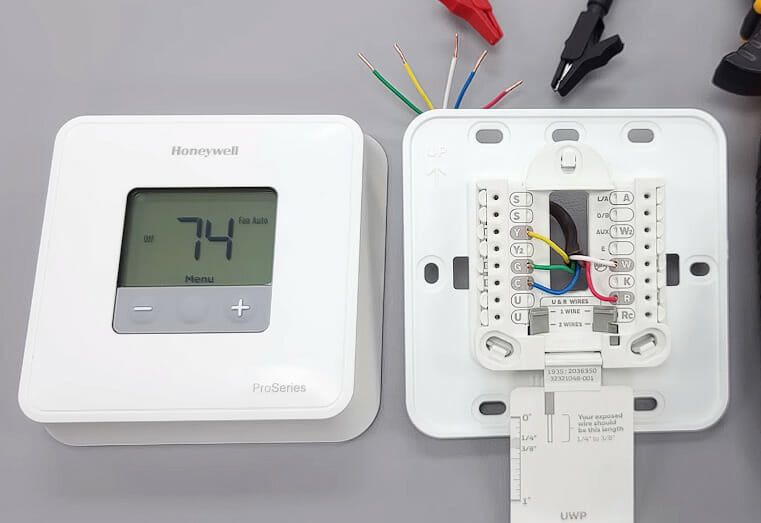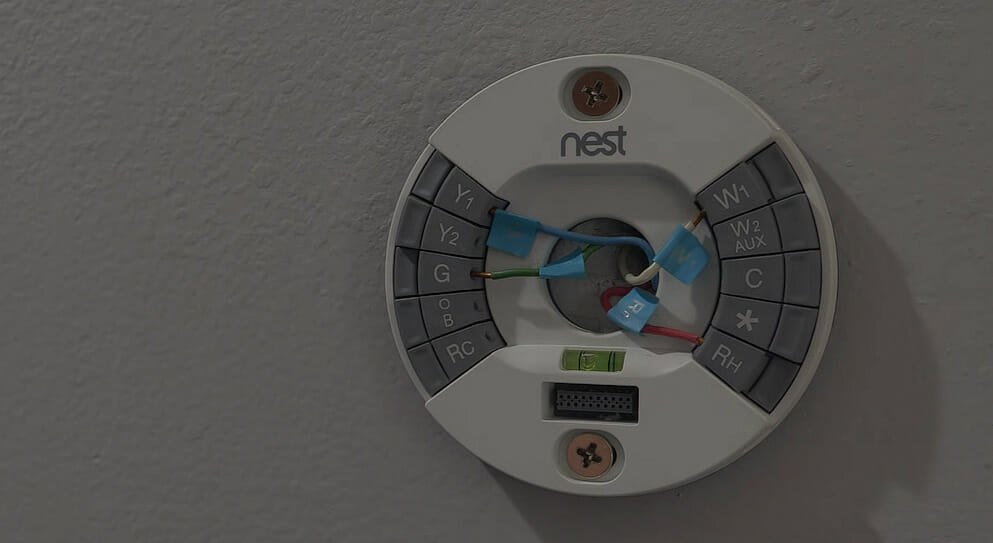What is the C Wire on a Thermostat? (Function + Table)

You might’ve heard of the mysterious “C-wire” in thermostats but weren’t sure about its purpose. So, let me quickly break it down for you.
The C-wire, also known as the “common wire,” is this essential little wire that delivers continuous power from your heating and cooling system to your thermostat. It helps your smart thermostat stay connected to Wi-Fi without losing power.
Throughout this article, we’ll dive deeper into the C-wire’s role in thermostat installations and why it’s significant for Wi-Fi-enabled devices.
C Wire Basics

Let me give you a quick rundown of what the C wire is considering thermostats.
The C wire, or common wire, is key to keeping your thermostat powered up and connected to your HVAC system.
Now HVAC system stands for Heating, Ventilation, and Air Conditioning, and it’s the essential system that keeps your home comfy all year round.
The C wire is handy because it helps ensure that your thermostat never loses power or Wi-Fi connection, which is super important when using smart thermostats.
So where does the C wire get its power from? It gets 24-volt power from your heating and cooling systems, like furnaces and air conditioners.
The C wire is denoted with the symbol “C” on your thermostat panel and provides that much-needed support.
Now, if you’re looking to install a smart thermostat or checking if your current setup has a C wire, there’s an easy way to find out. Just pop your thermostat off the wall and peek at the wires connected to it.
If you spot a wire connected to the terminal labeled “C,” you’re probably good to go!
Remember, the C wire is crucial for Wi-Fi thermostats, so ensure you know if your system has one before making the switch.
Function and Purpose of the C Wire

In thermostats, the C wire is like a VIP backstage pass. As mentioned, it connects your smart thermostat to your HVAC control panel, providing a continuous 24-volt power source.
Trust me; you want this power because it helps ensure your thermostat never loses power or a Wi-Fi connection! You don’t want to sweat in the middle of summer just because your thermostat decided to take a power nap (Sorry ;)).
The C wire is essential for Wi-Fi-enabled thermostats like Resideo Wi-Fi thermostats, providing a return path for continuous 24V power.
It keeps those smart thermostats happily chugging along so they can do their job.
So how does this magical C wire work? It’s connected to a transformer that’s part of your HVAC system. This transformer takes the higher voltage from your home’s electrical system and steps it down to a thermostat-friendly 24 volts.
The C wire ensures your thermostat has that juice it needs to keep going, like a never-ending supply of coffee for me during a home renovation project.
Let me tell you, having a C wire in place makes everything run smoothly when it comes to smart thermostats.
You can control your heating and cooling equipment with just a tap on your phone or a simple voice command. And who doesn’t want that kind of convenience?
As such, that’s the essential scoop on the C wire in your thermostat – a tiny but mighty component that keeps things running smoothly and ensures you stay comfortable in your home.
C-Wire’s Role in Different HVAC Systems
| HVAC System Type | Role of C-Wire |
|---|---|
| Central Air Conditioner | Delivers continuous power to the thermostat and helps maintain a Wi-Fi connection. |
| Heat Pump | Ensures continuous power supply to the thermostat, crucial for temperature regulation and Wi-Fi connectivity. |
| Furnace | Allows thermostat to regulate heating cycles without loss of power or Wi-Fi. |
| Boiler | Assists in maintaining a steady power supply during long heating cycles and enables smart control features. |
This table is a simplified explanation of the role of the C-wire in different HVAC systems. The specific function may vary depending on the HVAC system design and the thermostat’s features.
C Wire and Smart Thermostats
Smart thermostats are all the rage these days. And why wouldn’t they be? They give you the power to control your home’s temperature from your Wi-Fi-connected phone, even when you’re away!
Brands like Nest, Ecobee3, and Emerson Sensi are leading the pack in creating smart thermostats that are super easy to use.
Here’s the thing: not all thermostats have a C wire. You might come across older units that don’t have one, which can be a bummer when installing a smart thermostat.

But don’t worry! If you find out your current thermostat lacks a C wire, you have a few options.
First, see if you can locate an unused wire among the existing thermostat wiring. Sometimes, there’s a spare wire just waiting to be used as a C wire.
If that’s the case, connect the lucky winner to your HVAC control panel and smart thermostat, and you’ll be golden!
But if you don’t have a spare wire, you might need to call an HVAC professional to help you retrofit your system with a new C wire. These pros can even assess if your system could benefit from a C wire adapter.
So, before diving into the world of smart thermostats, don’t forget to check for your C wire.
It’s a crucial component that can make or break your thermostat installation, and believe me; you don’t want your smart thermostat going dark when you least expect it!
Comparing Thermostats with C-Wires and Without C-Wires
| Features | Thermostat with C-Wire | Thermostat without C-Wire |
|---|---|---|
| Continuous Power Supply | Yes | No |
| Wi-Fi Connectivity | Stable | Unstable |
| Compatibility with Smart Thermostats | High | Limited |
| Power Saving | High | Moderate |
| Installation Complexity | Moderate | Low |
References
Organizations:
- American Society of Heating, Refrigerating and Air-Conditioning Engineers (ASHRAE). https://www.ashrae.org/
Books:
- “HVAC Fundamentals 3rd Edition” by Samuel C. Sugarman
Websites:
- Resideo. https://www.resideo.com/
- OneHourSmartHome.com. https://www.onehoursmarthome.com/
Video References
One Hour Smart Home
AC Service Tech LLC
Tech With Brett
